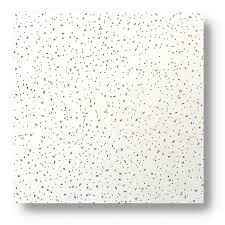- Afrikaans
- Albanian
- Amharic
- Arabic
- Armenian
- Azerbaijani
- Basque
- Belarusian
- Bengali
- Bosnian
- Bulgarian
- Catalan
- Cebuano
- Corsican
- Croatian
- Czech
- Danish
- Dutch
- English
- Esperanto
- Estonian
- French
- German
- Greek
- Hindi
- Indonesian
- irish
- Italian
- Japanese
- Korean
- Lao
- Malay
- Myanmar
- Norwegian
- Norwegian
- Polish
- Portuguese
- Romanian
- Russian
- Serbian
- Spanish
- Swedish
- Thai
- Turkish
- Ukrainian
- Uzbek
- Vietnamese
Nov . 08, 2024 04:22 Back to list
Understanding the Materials Used in Ceiling Grid Construction
What is Ceiling Grid Made Of?
A ceiling grid, commonly referred to as a suspended ceiling or false ceiling, is a widely used architectural feature in both residential and commercial spaces. It is essentially a framework that supports ceiling tiles or panels, allowing for easier installation and maintenance while providing a clean and organized appearance. The materials used to manufacture ceiling grids can vary based on the design requirements, aesthetic preferences, and specific functionalities desired. In this article, we will explore the common materials used in ceiling grid construction, their properties, and their advantages.
1. Main Materials Used in Ceiling Grids
The primary materials used in the fabrication of ceiling grids are typically metal, mineral fiber, and plastic.
a. Metal Metal ceiling grids are predominantly made from galvanized steel or aluminum. Galvanized steel is favored for its strength and durability. Its resistance to corrosion makes it an ideal choice for environments with high humidity or exposure to moisture. Aluminum grids are lightweight, resistant to rust, and can be anodized or painted to achieve various finishes. The metal grid system is favored in commercial spaces due to its ability to support heavier tiles and integrated lighting fixtures, ensuring both functionality and aesthetic appeal.
b. Mineral Fiber Another common material for ceiling grids is mineral fiber, especially in the context of the tiles themselves. These tiles are often installed within a metal grid and serve the purpose of sound absorption, fire resistance, and thermal insulation. Mineral fiber tiles are made from materials like fiberglass or recycled paper and are popular in office buildings, schools, and hospitals. They help improve acoustics while also providing a finished look and allowing for the easy integration of HVAC ducts and electrical wiring.
c. Plastic Plastic ceiling grids, often made from PVC (Polyvinyl Chloride), are less common but can be utilized in certain applications. They are lightweight and resistant to moisture, making them suitable for areas prone to humidity, such as bathrooms and kitchens. However, plastic grids generally do not have the same structural strength as metal options and might not support heavy tiles or fixtures.
2. Advantages of Ceiling Grids
what is ceiling grid made of

Ceiling grids offer multiple benefits, making them a popular choice in modern construction
a. Flexibility The modular design of ceiling grids allows for easy customization. Builders and designers can create various layouts to accommodate lighting, ventilation, and other building systems seamlessly.
b. Accessibility One of the most significant advantages of suspended ceilings is the accessibility they afford. Maintenance of various utilities such as electrical wiring, fire suppression systems, and HVAC can be conducted through tiles without major renovations.
c. Aesthetic Appeal Ceiling grids can enhance a room's overall appearance. The choice of tiles and the grid system can help create different moods and atmospheres, catering to both functional and decorative needs.
d. Acoustic Control Many ceiling tiles designed for use in grid systems are engineered to absorb sound, making them a popular choice for office spaces or public venues where noise control is essential.
e. Energy Efficiency Some grid systems incorporate insulation features, contributing to a building's energy efficiency by regulating indoor temperatures and reducing energy costs.
Conclusion
In conclusion, ceiling grids are essential components in contemporary construction, made from various materials ranging from metal to mineral fiber and plastic. Each material offers specific advantages, contributing to a ceiling's functionality, aesthetics, and overall building performance. Whether in a residential home or a bustling commercial space, the right ceiling grid can enhance the environment, making it not only more attractive but also more practical. As designers continue to innovate, we can expect ceiling grid systems to evolve, meeting the future's architectural demands.
-
Transform Interiors with PVC Gypsum Ceiling: A Stylish, Durable, and Moisture-Resistant SolutionNewsMay.19,2025
-
The Smart Interior Upgrade: Discover the Durability and Versatility of Gypsum Ceiling Access Panel SolutionsNewsMay.19,2025
-
The Smart Choice for Interior Design: Discover the Value of PVC Gypsum Ceiling SolutionsNewsMay.19,2025
-
Mineral Fiber Ceiling Tiles: The Smart Blend of Performance and AestheticsNewsMay.19,2025
-
Mineral Fiber Ceiling Tiles: The Superior Choice Over Gypsum for Sound and Fire SafetyNewsMay.19,2025
-
Mineral Fiber Ceiling Tiles: Eco-Friendly Strength and Style for Every CeilingNewsMay.19,2025







